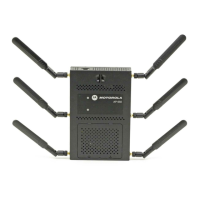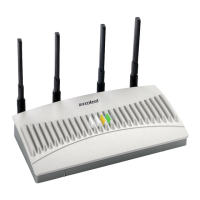Services Configuration
9-5
5. Define the following Settings for the captive portal policy:
6. Use the AAA Policy drop-down menu to select the Authentication, Authorization and Accounting (AAA)
policy used to validate user credentials and provide captive portal guest access to the network.
If no AAA policies exist, one must be created by selecting the Create icon, or an existing AAA policy can
be selected and modified by selected it from the drop-down menu and selecting the Edit icon. For
information on creating a AAA policy that can be applied to a captive portal configuration, see AAA Policy
on page 6-50.
Guest Access Policy If creating a new policy, assign a name representative of its access
permissions, location or intended wireless client user base. If editing an
existing captive portal policy, the policy name cannot be modified. The
name cannot exceed 32 characters.
Captive Portal
Server Mode
Set the mode as either Internal (Self) or External (Centralized). Select
the Internal (Self) radio button to maintain the captive portal configuration
(Web pages) internally. Select the External (Centralized) radio button if the
captive portal is supported on an external server. The default value is
Internal (Self).
Captive Portal
Server
Set a numeric IP address (non DNS hostname) for the server validating
guest user permissions for the captive portal policy. This option is only
available if hosting the captive portal on an External (Centralized) server
resource.
Connection Mode Select either the HTTP or HTTPS radio button to define the connection
medium. Motorola Solutions recommends the use of HTTPs, as is offers
additional data protection HTTP cannot provide. The default value however
is HTTP.
Simultaneous Users Select the checkbox and use the spinner control to set between 0-8192
users (client MAC addresses) allowed to simultaneously access and use
the captive portal.

